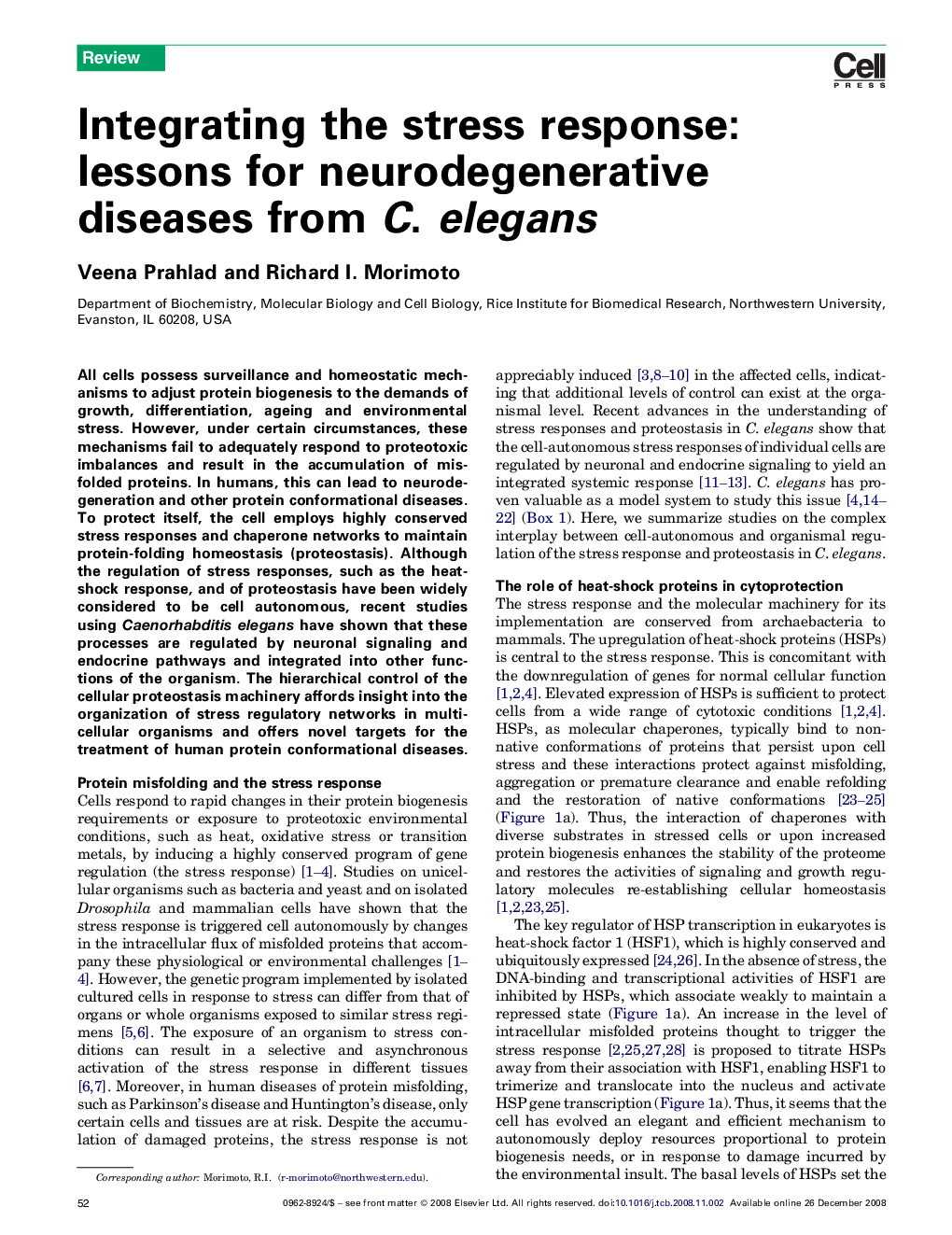| Article ID | Journal | Published Year | Pages | File Type |
|---|---|---|---|---|
| 2205001 | Trends in Cell Biology | 2009 | 10 Pages |
All cells possess surveillance and homeostatic mechanisms to adjust protein biogenesis to the demands of growth, differentiation, ageing and environmental stress. However, under certain circumstances, these mechanisms fail to adequately respond to proteotoxic imbalances and result in the accumulation of misfolded proteins. In humans, this can lead to neurodegeneration and other protein conformational diseases. To protect itself, the cell employs highly conserved stress responses and chaperone networks to maintain protein-folding homeostasis (proteostasis). Although the regulation of stress responses, such as the heat-shock response, and of proteostasis have been widely considered to be cell autonomous, recent studies using Caenorhabditis elegans have shown that these processes are regulated by neuronal signaling and endocrine pathways and integrated into other functions of the organism. The hierarchical control of the cellular proteostasis machinery affords insight into the organization of stress regulatory networks in multicellular organisms and offers novel targets for the treatment of human protein conformational diseases.
